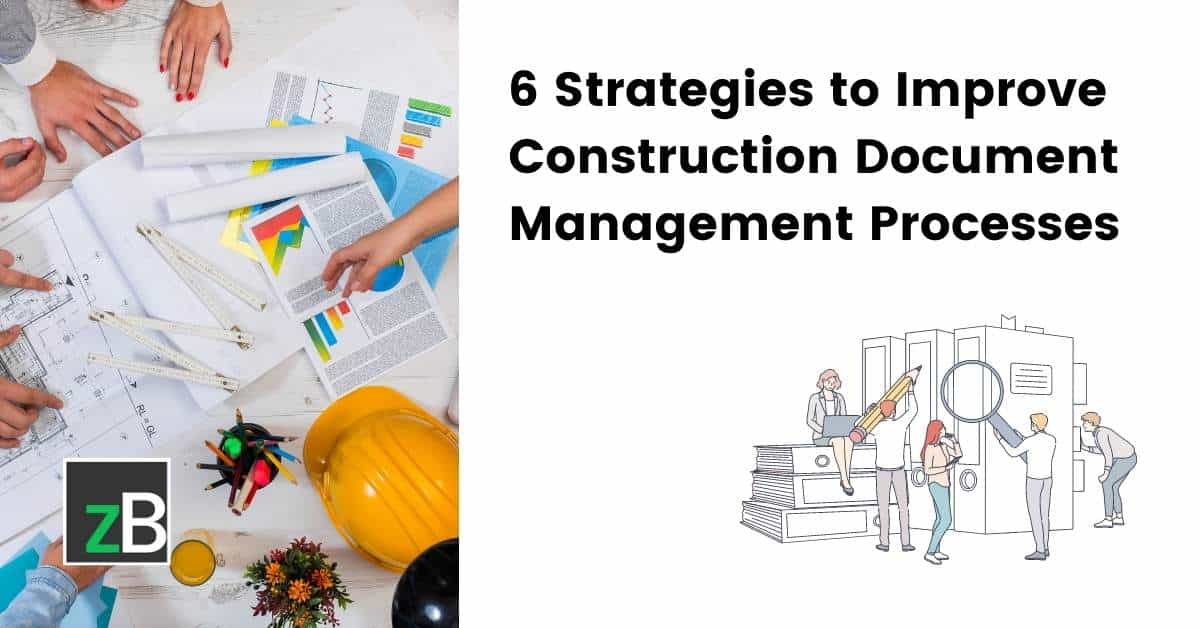Boost Your Task Management: Construction Document Management Devices You Required
Boost Your Task Management: Construction Document Management Devices You Required
Blog Article
Enhancing Process Efficiency: Architect's Professional Strategies for Building Document Monitoring
In the realm of architectural style and building, the careful monitoring of papers stands as a keystone for task success. These strategies not only ensure smooth project development yet additionally hold the key to unlocking enhanced performance and accuracy in the detailed world of building and construction record monitoring.
Trick File Organization Methods
When handling building files, one of the key techniques that engineers use is developing a reliable and organized organization system. This system typically entails classifying files based on their type, such as illustrations, requirements, contracts, and permits. By producing clear and unique categories, architects can promptly find certain information when required, saving time and minimizing mistakes in the building procedure.
Within each classification, engineers further organize papers by developing subfolders or using numbering systems to denote versions or modifications (construction document management). This ordered framework ensures that the most present and pertinent info is quickly obtainable while preserving a document of adjustments made throughout the task timeline
Furthermore, designers usually make use of electronic paper monitoring systems that offer functions like keyword search features, variation control, and accessibility constraints to boost company and partnership among job stakeholders. These tools improve the document retrieval procedure, advertise real-time updates, and assist in seamless communication, ultimately contributing to the total success of the building and construction task.
Collaborative System Combination
To optimize document administration effectiveness in building projects, engineers flawlessly incorporate collective platforms to boost interaction and improve coordination amongst task stakeholders. By leveraging joint platforms such as project monitoring software application, cloud-based storage systems, and communication devices, designers can create a central hub for all project-related documents and interaction networks. These platforms allow employee to access, testimonial, and work together on documents in real-time, lowering delays and the threat of mistakes connected with conventional file monitoring techniques.
Joint platform combination additionally fosters openness and accountability within the job group, as all stakeholders have exposure into the newest project updates and alterations. By centralizing interaction and document sharing, engineers can ensure that all staff member are functioning from the most current details, reducing the possibilities of misconceptions or conflicts developing because of obsolete records.
Additionally, joint systems make it possible for smooth collaboration between architects, professionals, clients, and other job stakeholders, promoting a much more natural and reliable task operations. By damaging down interaction obstacles and promoting details exchange, engineers can drive performance and technology in building and construction tasks, inevitably bring about effective job results.
Version Control Best Practices
Implementing effective variation control techniques is critical for keeping record precision and uniformity in building jobs. By establishing a clear system for managing alterations, job teams can guarantee that everyone is functioning from the most current paperwork, minimizing the risk of mistakes and inconsistencies during the construction stage.
One of the key ideal methods for variation control is to designate distinct identifiers to every document version. This can be attained by utilizing a numbering system or day stamp that clearly indicates the order of alterations. By clearly classifying each version, staff member can easily track the development of the paper and identify one of the most recent variation.

Automation Devices for Effectiveness

File control software application, like Procore or PlanGrid, streamlines task documentation, making it easily accessible to all stakeholders. These platforms enable real-time partnership, version control, and automated back-ups, safeguarding against data loss. Additionally, Building Information Modeling (BIM) software automates the generation of construction drawings and guarantees that modifications are synchronized across all related documents.
Integrating automation tools with cloud storage services even more improves ease of access and safety and security. By automating the file management process, project teams can concentrate their effort and time on value-adding tasks, eventually enhancing performance and project outcomes.
Secure Information Management Solutions
Successfully handling and safeguarding project information is vital in the building sector to ensure discretion and integrity throughout Web Site the job lifecycle. Building firms can use encrypted cloud storage space services to safely save and share task documents with licensed employees.
Furthermore, using electronic civil liberties administration (DRM) devices includes an extra layer of safety by protecting against the unauthorized circulation or replication of job records. Regular data backups are necessary to reduce the danger of information loss as a result of unpredicted circumstances like hardware failures or cyber-attacks. Joint platforms with integrated protection features enable seamless communication and data sharing amongst task staff member while maintaining data stability.
Verdict
To conclude, executing crucial paper company methods, incorporating collective platforms, practicing version control best practices, utilizing automation devices, and taking on protected data administration services are vital approaches for boosting process effectiveness in building file management. These expert strategies can streamline procedures, boost communication, guarantee accuracy, and maintain information safety throughout the building project lifecycle.
In the world of building style and construction, the meticulous monitoring of papers stands as a foundation for job success. These techniques not just make sure smooth job development yet likewise hold the key to opening improved productivity and accuracy in the elaborate realm of building and construction file management.
To enhance paper administration efficiency in building and construction projects, engineers seamlessly incorporate collaborative systems to enhance interaction and streamline sychronisation amongst job stakeholders. These systems allow team participants to access, evaluation, and collaborate on papers in real-time, reducing hold-ups and the risk of errors linked with traditional paper monitoring techniques.
Making use of automation tools in building file monitoring considerably boosts efficiency and enhances procedures for job Look At This groups. construction document management.
Report this page